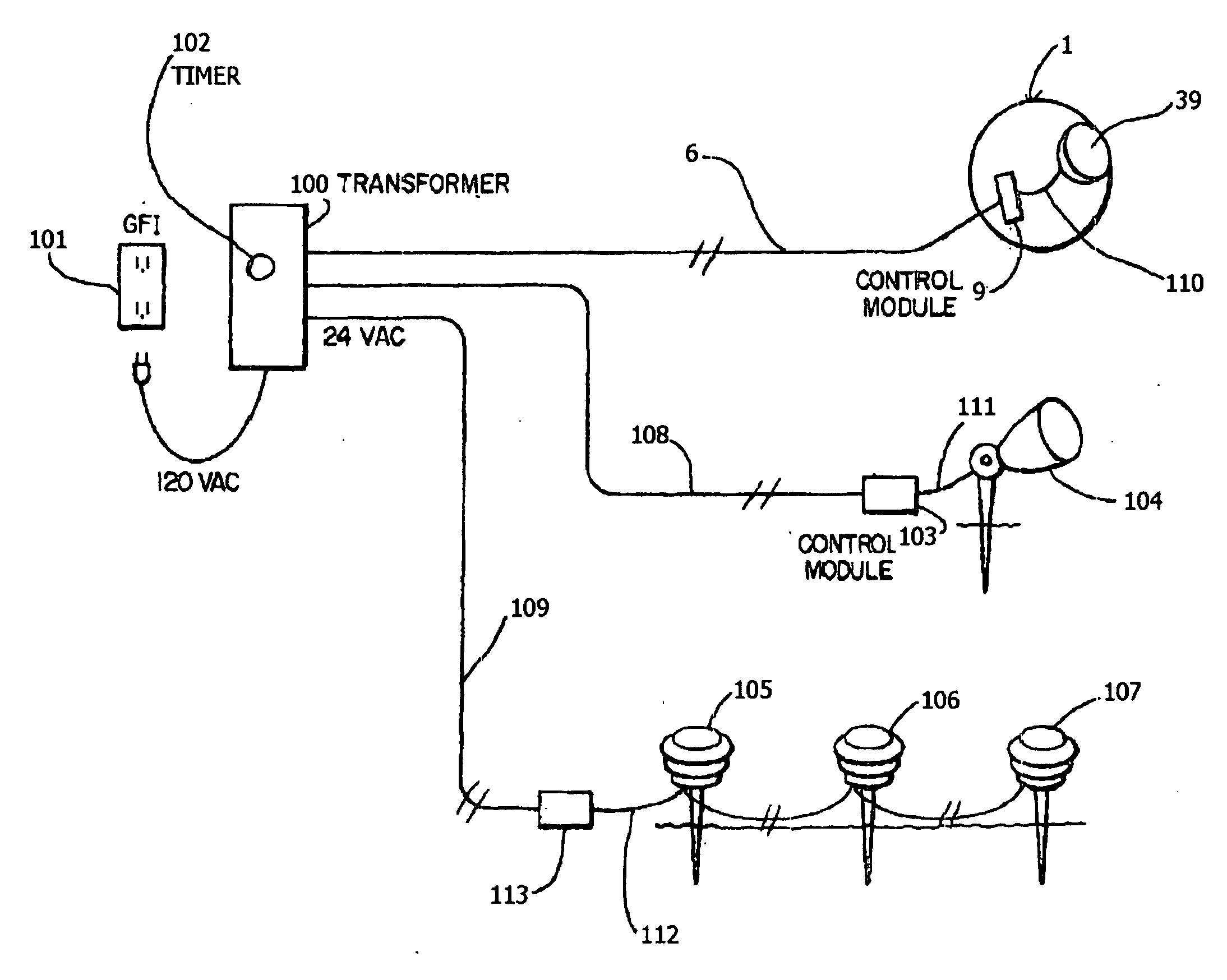Energy saving extra-low voltage dimmer and security lighting system wherein fixture control is local to the illuminated area
- Summary
- Abstract
- Description
- Claims
- Application Information
AI Technical Summary
Benefits of technology
Problems solved by technology
Method used
Image
Examples
first embodiment
[0627]In FIG. 1B, the configuration of the first embodiment consists of the power supply transformer (120 volts AC) 100 connected by secondary transmission conductors 6 to the Control Module 9 (internal to the luminaire 1). The Control Module 9 is connected to the lamp 39 within luminaire 1 via power conductors 110.
[0628]In a multi-luminaire configuration of this embodiment, as illustrated in FIG. 1A described above, additional luminaires 2, 3, 4 with their own individual Control Modules (internal to the luminaire 2, 3, 4) 10, 11, 12 are added and connected to the power supply transformer (120 volts AC) 100 with secondary transmission conductors 7, 8, 13.
second embodiment
[0629]In FIG. 1. B, the configuration of the second embodiment consists of the power supply transformer (120 volts AC) 100 connected by secondary transmission conductors 108 to the Control Module 103 (external to the luminaire) in close proximity to an extra-low voltage luminaire 104 of other manufacture, in which the lamp does not exceed 50 watts. From the external Control Module 103, power is fed to the lamp within the luminaire 104 via power conductors 111.
third embodiment
[0630]In FIG. 1B, the configuration of the third embodiment consists of the power supply transformer (120 volts AC) 100 connected by secondary transmission conductors 109 to the Control Module (external to the luminaire) 113 in close proximity to a daisy chain of extra-low voltage luminaires 105, 106, 107 of other manufacture, the lamps within said luminaires not exceeding 50 watts total. From the external Control Module 113, power is fed to the lamps within the daisy chain of luminaires via power conductors 112.
[0631]Any combination of the three embodiments in FIG. 1B, and not restricted to only these embodiments, could be utilized in a single landscape design.
[0632]In FIG. 1B, the power supply transformer (120 volt AC) is switched ON and OFF by a rotary timer 102. Said transformer 100 can be controlled by other components but for illustration purposes we have used a rotary timer.
[0633]Referring to FIG. 2, this is a drawing of the circuitry of the Control Module board FIG. 4-36, wh...
PUM
 Login to View More
Login to View More Abstract
Description
Claims
Application Information
 Login to View More
Login to View More - R&D
- Intellectual Property
- Life Sciences
- Materials
- Tech Scout
- Unparalleled Data Quality
- Higher Quality Content
- 60% Fewer Hallucinations
Browse by: Latest US Patents, China's latest patents, Technical Efficacy Thesaurus, Application Domain, Technology Topic, Popular Technical Reports.
© 2025 PatSnap. All rights reserved.Legal|Privacy policy|Modern Slavery Act Transparency Statement|Sitemap|About US| Contact US: help@patsnap.com



